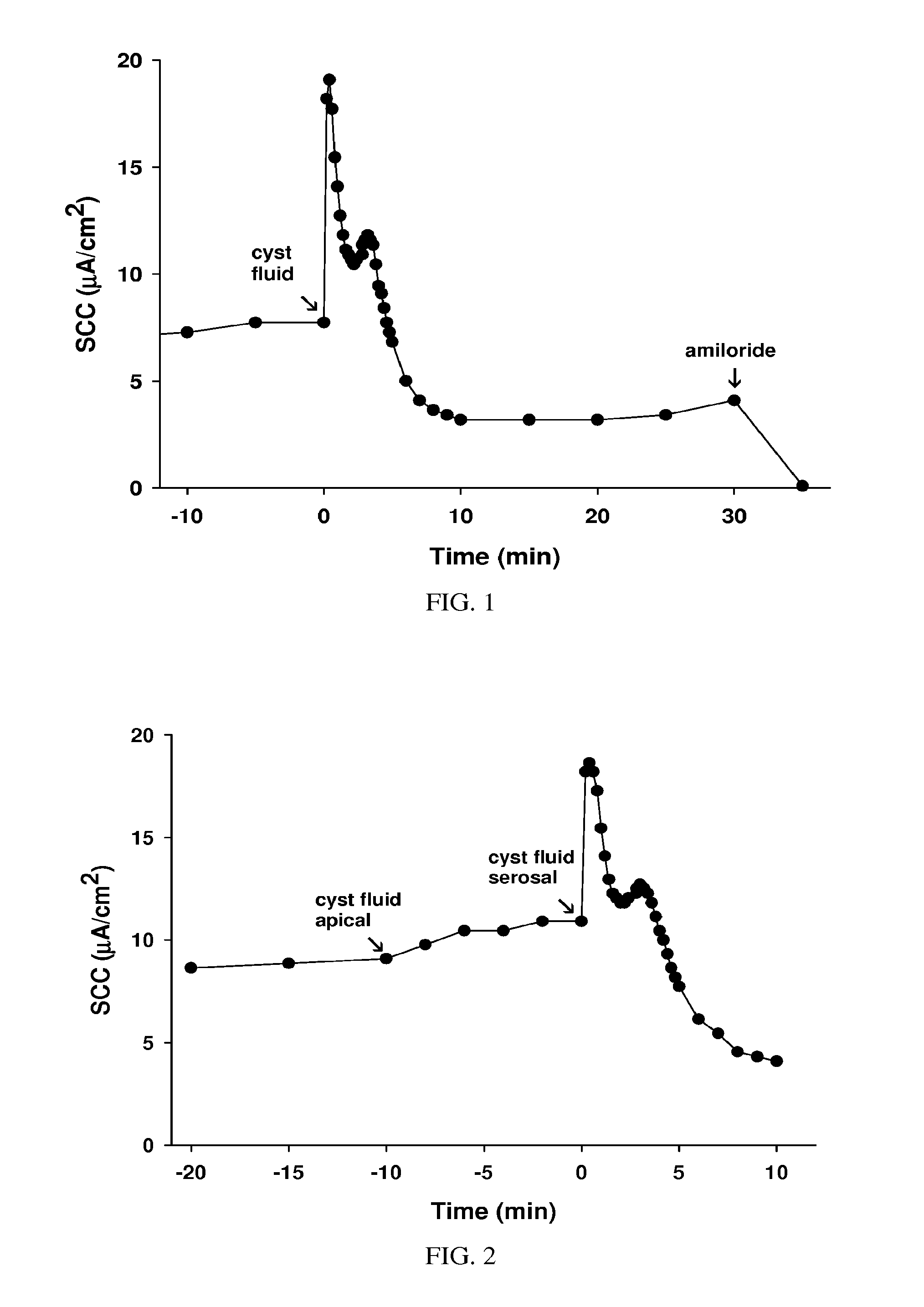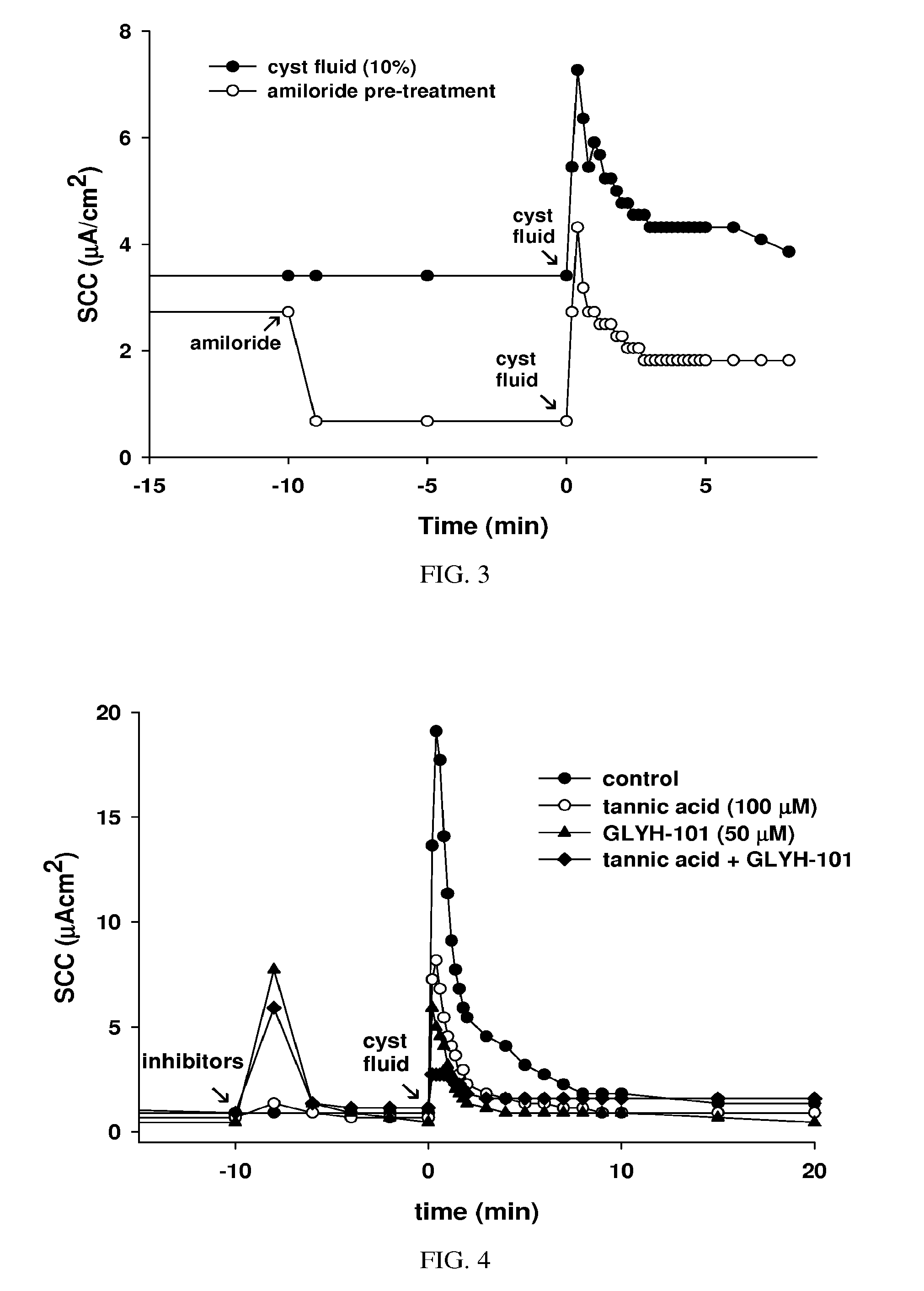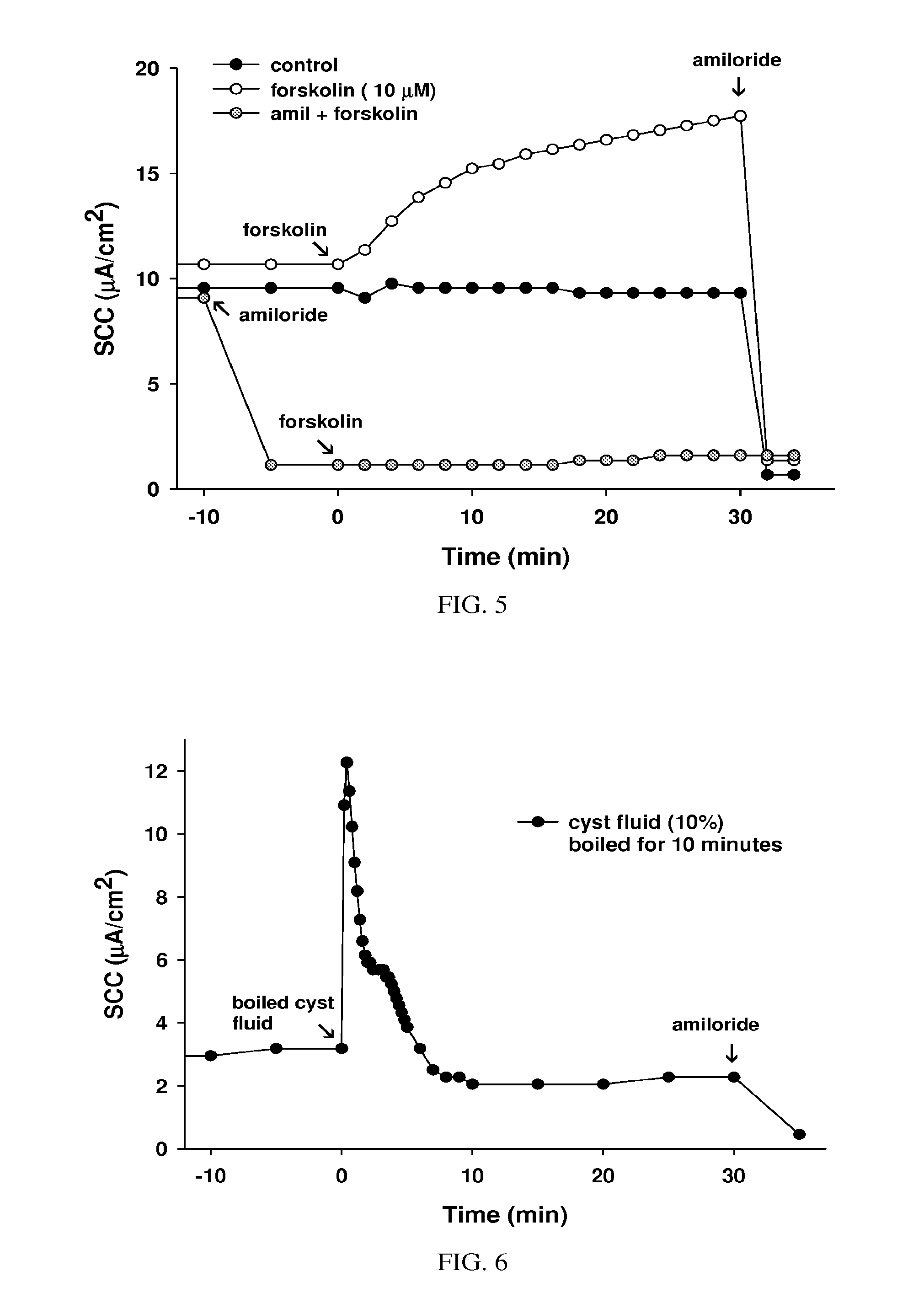Treatment of cystic diseases
a cystic disease and disease technology, applied in the field of cystic disease treatment, can solve the problems of affecting the treatment effect of cysts, so as to prevent the formation and/or expansion of cysts, block the initiation and/or growth of cysts, and improve the treatment effect.
- Summary
- Abstract
- Description
- Claims
- Application Information
AI Technical Summary
Benefits of technology
Problems solved by technology
Method used
Image
Examples
examples
Example
[0063]Extensive analyses were conducted, including a proteomic determination of the cyst fluid. Cyst fluid was separated into fractions containing components with molecular weights greater and less than 100 kDa (CENTRICON-100, AMICON). The secretory activity remained in the retentate (substances>100 kDa) indicating the factor causing the secretion is larger than forskolin (MW 0.14 kDa). It was found that the stimulatory activity appears to be due to lysophosphatidic acid (LPA) bound to a group of large molecular weight binding proteins.
[0064]Proteomic analyses indicated most of these binding proteins were found predominately in the serum. Subsequent experiments indicated that serum, which contains 1-10 μM LPA, mimics the stimulatory activity of the cyst fluid when added directly to the normal renal cells (FIG. 12).
Example
[0065]Treatment of PCK rats with an LPA antagonist The PCK rat expresses many of the characteristics of human ADPKD but the mutation that causes the rodent f...
example
[0105]Multiple reaction monitoring by tandem mass spectrometry was used to quantitate the concentration of LPA molecular species in the cyst fluid collected from one patient. The cyst fluid contained 3.95+0.40 μM 16:0 LPA, 1.42+0.043 μM 18:1 LPA and 18:0 LPA present at levels too low to quantitate with our methods. The combined concentrations of the various species are above 5 μM and, therefore, based on the dose response relationship, addition of cyst fluid at a 10% volume / volume dilution (final LPA concentration above 0.5 μM) would stimulate a maximal response.
[0106]LPA responses are mediated via a family of receptors. In polarized epithelial cells, these receptors are found predominately on the basolateral membrane. To determine the nature of the LPA receptors and to provide a further indication of the nature of the active component of the cyst fluid, the renal cells were treated with several LPA receptor antagonists / agonists.
[0107]L-NASPA (N-palmitoyl-L-serine phosphoric acid) h...
PUM
| Property | Measurement | Unit |
|---|---|---|
| molecular weights | aaaaa | aaaaa |
| MW | aaaaa | aaaaa |
| internal diameter | aaaaa | aaaaa |
Abstract
Description
Claims
Application Information
 Login to View More
Login to View More - R&D
- Intellectual Property
- Life Sciences
- Materials
- Tech Scout
- Unparalleled Data Quality
- Higher Quality Content
- 60% Fewer Hallucinations
Browse by: Latest US Patents, China's latest patents, Technical Efficacy Thesaurus, Application Domain, Technology Topic, Popular Technical Reports.
© 2025 PatSnap. All rights reserved.Legal|Privacy policy|Modern Slavery Act Transparency Statement|Sitemap|About US| Contact US: help@patsnap.com



